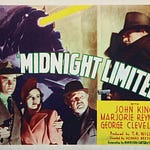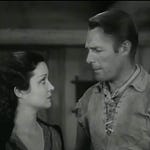Nanook of the North (also known as Nanook of the North: A Story Of Life and Love In the Actual Arctic) is a 1922 American silent documentary film by Robert J. Flaherty, with elements of docudrama, at a time when the concept of separating films into documentary and drama did not yet exist.
In the tradition of what would later be called salvage ethnography, Flaherty captured the struggles of the Inuk man named Nanook and his family in the Canadian Arctic. The film has been incorrectly considered the first feature-length documentary. Some have criticized Flaherty for staging several sequences, but the film is generally viewed as standing “alone in its stark regard for the courage and ingenuity of its heroes.”
In 1989, Nanook of the North was one of the first 25 films to be selected for preservation in the United States National Film Registry by the Library of Congress as being “culturally, historically, or aesthetically significant”.
Controversies:
Flaherty has been criticized for deceptively portraying staged events as reality. “Nanook” was in fact named Allakariallak (pronounced [al.la.ka.ɢi.al.lak]), while the “wife” shown in the film was not really his wife. According to Charles Nayoumealuk, who was interviewed in Nanook Revisited (1990), “the two women in Nanook – Nyla (Alice Nuvalinga) and Cunayou (whose real name we do not know) were not Allakariallak’s wives, but were in fact common-law wives of Flaherty.” And although Allakariallak normally used a gun when hunting, Flaherty encouraged him to hunt after the fashion of his recent ancestors in order to capture the way the Inuit lived before European influence. On the other hand, while Flaherty made his Inuit actors use spears instead of guns during the walrus and seal hunts, the prey shown in the film were genuine, wild animals. Flaherty also exaggerated the peril to Inuit hunters with his claim, often repeated, that Allakariallak had died of starvation two years after the film was completed, whereas in fact he died at home, likely of tuberculosis.
Building of the igloo:
The building of the igloo is one of the most celebrated sequences in the film, but interior photography presented a problem. Building an igloo large enough for a camera to enter resulted in the dome collapsing, and when they finally succeeded in making the igloo it was too dark for photography. Instead, the images of the inside of the igloo in the film were actually shot in a special three-walled igloo for Flaherty’s bulky camera so that there would be enough light for it to capture interior shots.
Visit to the trade post of the white man:
In the “Trade Post of the White Man” scene, Nanook and his family arrive in a kayak at the trading post and one family member after another emerge from a small kayak, akin to a clown car at the circus. Going to trade his hunt from the year, including the skins of foxes, seals, and polar bears, Nanook comes in contact with the white man and there is a funny interaction as the two cultures meet. The trader plays music on a gramophone and tries to explain how a man ‘cans’ his voice. Bending forward and staring at the machine, Nanook puts his ear closer as the trader cranks the mechanism again. The trader removes the record and hands it to Nanook who at first peers at it and then puts it in his mouth and bites it. The scene is meant to be a comical one as the audience laughs at the naivete of Nanook and people isolated from Western culture. In truth, the scene was entirely scripted and Allakariallak knew what a gramophone was.
Hunting of the walrus:
It has been pointed out that in the 1920s when Nanook was filmed, the Inuit had already begun integrating the use of Western clothing and were using rifles to hunt rather than harpoons, but this does not negate that the Inuit knew how to make traditional clothing from animals found in their environment, could still fashion traditional weapons and were perfectly able to make use of them if found to be preferable for a given situation.
Listen to this episode with a 7-day free trial
Subscribe to Public Domain Movies to listen to this post and get 7 days of free access to the full post archives.












